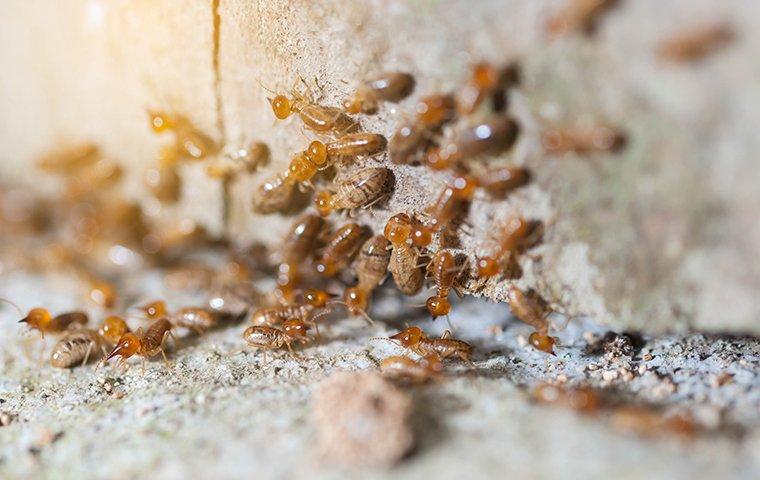Is your home attractive to termites? You might think that it is—simply because it is made of wood. This is partly true. Every home that has wood in it is at risk because termites eat wood. But termites don’t know your home has wood in it. If they never find out, then you have less of a risk of infestation. Here is a step-by-step guide to help you protect your property from termite infestation.

Food
When termite workers come into your yard in the Las Vegas/Mesquite or Dallas/Fort Worth areas, they’re looking for food sources. Before they eat the wood of your home, they’ll eat other things in your yard. Some food options you should be aware of are:
- Stumps
- Logs
- Trees with heart rot
- Stacked firewood
- Old wooden fences
- Old wooden structures
- Wood trim around landscaping
- Stacked cardboard or stacks of cardboard boxes
Moisture
When worker termites tunnel in your yard, or when termite swarmers scout for a location to create a nest, they’re looking for areas that are moist. This is because moisture provides the perfect environment for termites. The moist soil keeps the worker termites’ skin hydrated, and moisture provides the conditions for wood to rot. You can reduce the moisture that attracts termites by:
- Alter conditions that allow rainwater to collect.
- Clean clogged gutters and fix broken places in your gutter system.
- Water your lawn and your landscaping in the morning so that the sun has time to dry the topsoil.
- Trim tree branches to allow sunlight into locations that tend to get damp.
- Put space between the plants in your landscaping to provide good airflow.
- Fix plumbing issues.
- Keep leaves and other debris raked up. These block the sun and trap moisture underneath.
Wood-To-Soil Contact
Subterranean termites don’t eat through concrete. They build shelter tubes up hard surfaces to access wood that is above ground. They are far more likely to feed on a home if there are areas where wood makes contact with the soil. This can also increase how quickly a termite colony can feed. The quicker a colony can feed, the faster it will grow its population. Make sure that there is at least 18 inches between the wood of your home and the soil.
Entry Points
Most subterranean termite species will not establish a nest inside a home. They go in and out of a home from a ground nest. Formosan subterranean, which have been found in our Dallas/Fort Worth service area, can make interior nests. They do this by lining the interior of their nests with their fecal matter to hold moisture in. It is important to seal potential entry points to keep subterranean termites out, but especially to keep those Formosan termites out.
- Inspect your foundation wall and seal any cracks you find.
- Examine areas where pipes pass through your foundation wall. Seal any gaps you find around those pipes.
- Make sure your door sweeps and weather stripping are in good condition and that they make a good seal.
- Inspect your exterior for holes created by wood-damaging pests like carpenter ants, mice, and rats. These holes can be superhighways for subterranean termites and other pests. A caulking gun can help you fill these in temporarily.
Termite Control
The steps in this guide can make your property less inviting to termites, but it isn’t complete protection. For complete protection, you need a termite control product put in place around your home, and have your termite protection maintained by a licensed professional. At Evolve Pest Control, we trust the award-winning Sentricon® System with Always Active™ to prevent termite damage in our Dallas-Fort Worth and Las Vegas service areas. We would love to tell you all about it. Reach out to us today and start the conversation. We’re standing by to help.

